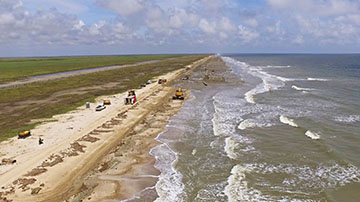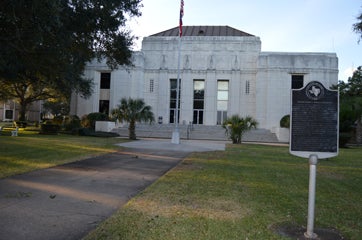McFaddin Beach and dune restoration awarded $15.8 million
Published 11:50 am Thursday, October 19, 2017
The Texas Trustee Implementation Group in charge of Deepwater Horizon coastal restoration formally adopted its first plan for allocating Natural Resource Damages Act funds to restore natural resources injured by the 2010 oil spill. The plan contains a $15.8 million grant for the McFaddin Beach and Dune restoration along Jefferson County’s Gulf of Mexico coast.
The press release by the Texas Trustee Implementation Group (Texas TIG) states:
“The McFaddin Beach and Dune Restoration project includes placement of sand along approximately 17 miles of shoreline in northeastern Texas. This project will fund about a third of the estimated $45,000,000 total project cost. The Texas TIG will partner with other funding sources to complete the construction implementation, monitoring, and/or planning activities. This project will provide important ecological benefits by restoring lost beach and dune habitat and by helping to slow or stop marsh and land loss in McFaddin National Wildlife Refuge interior marshes.”
The Texas TIG’s Final 2017 Restoration Plan/Environmental Assessment evaluated more than 800 project ideas from the public, state and federal agencies, and stakeholders. From this range of restoration alternatives the Texas TIG selected 13 projects for implementation. The total estimated cost of all 13 projects is $45,761,000.
“The McFaddin Beach and Dune grant is another milestone to completing the Salt Bayou Watershed Restoration Project which is Jefferson County’s number one priority for Deepwater Horizon restoration,” said Jefferson County Judge Jeff R. Branick.
“Two phases of the Salt Bayou project are already completed with the Keith Lake Fish Pass underwater barrier and a beach berm located behind the McFaddin Beach all the way into Chambers County. A third phase involving construction of two fresh water siphons under the Gulf Intracoastal Waterway is in the preconstruction phase with nearly all needed funds identified. This year, the Texas General Land Office (GLO) and the U.S. Fish and Wildlife Service built over three miles of the McFaddin Beach and Dune system. The Texas TIG’s new grant award will help toward completing the entire 20 miles which is the vital last phase in the Salt Bayou Project,” Branick said.
Jefferson County is coordinating closely with Governor Greg Abbott, the Texas Commission on Environmental Quality, Texas Parks and Wildlife Department and GLO, as well as six federal agencies, the U.S. Department of Interior, National Oceanic and Atmospheric Administration, U.S. Department of Agriculture, U.S. Environmental Protection Agency, U.S. Army Corps of Engineers and the U.S. Department of Homeland Security.
“The state and federal agencies recognize the wide ranging benefits of protecting Texas’ largest coastal marsh here in Jefferson County,” Branick said, “including the nesting, breeding and feeding habitat for over 90 percent of the fish and wildlife species in the Gulf of Mexico that all use the Salt Bayou Watershed’s varied and rich habitats for part of their life cycle. All of those resources and marsh habitats were injured by the Deepwater Horizon oil spill which provides the nexus for allocating restoration dollars.”
“In addition, hurricane storm surge protection will be a primary objective of the McFaddin Beach and Dune phase of the Salt Bayou Project and this has multiple benefits to protecting homes, businesses and nationally significant energy and national defense assets as well as the integrity of the most valuable, heavily used stretch of the Gulf Intracoastal Waterway.”
Jefferson County’s coastal marshes are part of the Chenier Plain ecosystem that provides critical wintering habitat in North America’s largest migratory waterfowl flyway that includes Calcasieu, Cameron and Vermilion Parish in Louisiana.
“In the aftermath of Hurricane Harvey no one can take the coastal protections of the Salt Bayou Watershed for granted,” Branick added.
More information on the Texas TIG funding announcement is available at: http://www.gulfspillrestoration.noaa.gov/2017/10/texas-trustee-implementation-group-releases-first-restoration-plan






